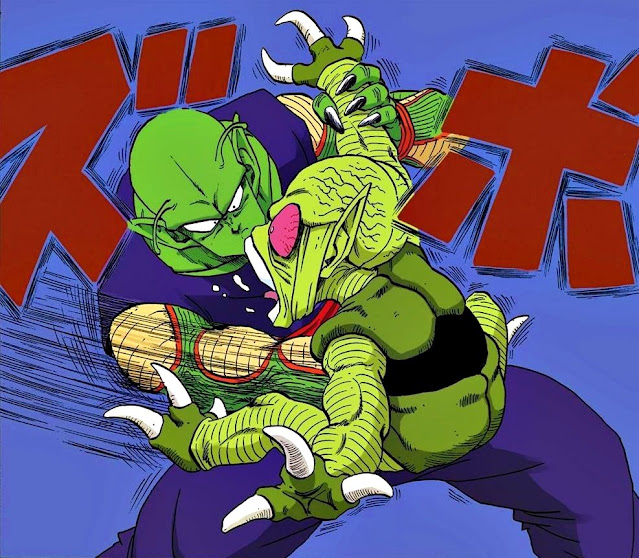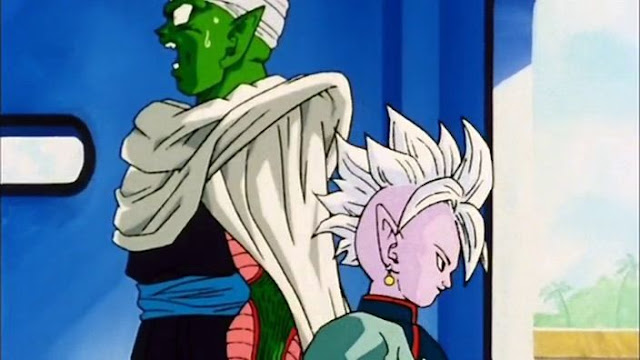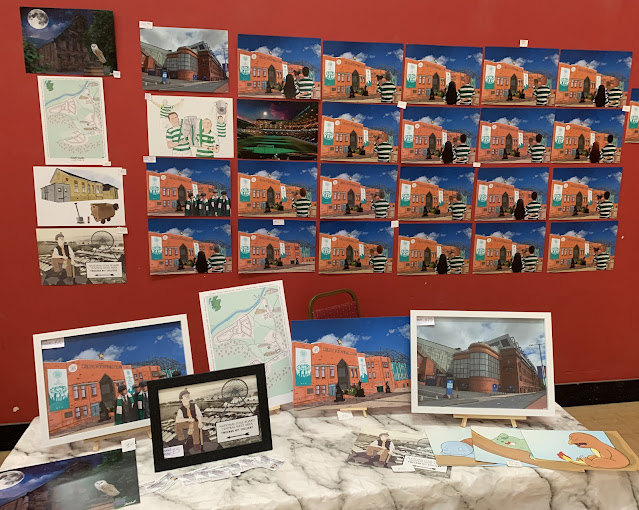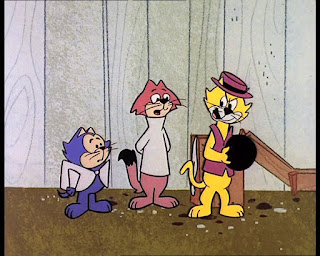Short and sweet blog post to follow! As discussed on my previous update, I have now completed and printed our Highland Cow designs. As you can see below, I have created a number of variants of the aforementioned design: Celtic, Rangers, Scotland, Morton, Gryffindor and Slytherin.
Thursday, 11 December 2025
Highland Coo’s Aplenty!
Short and sweet blog post to follow! As discussed on my previous update, I have now completed and printed our Highland Cow designs. As you can see below, I have created a number of variants of the aforementioned design: Celtic, Rangers, Scotland, Morton, Gryffindor and Slytherin.
Friday, 17 October 2025
Latest Update!
Wednesday, 30 July 2025
Latest Updates!
Hello all!
I feel like I always start these blog posts with a remark about how long it's been since I last posted - I guess I do it quite a lot, but with good reason! For the past few months, I've been winding down from my latest animation and spending more time with my family. On this project, I was responsible for animation, character design, script/storyboard and 30+ backgrounds of varying detail - in fact, the only element that wasn't my responsibility was the sound.
Needless to say, while I am bursting with pride at what I've produced, recuperation time was vital - I had to commit a lot of myself to the production. With the project finally wrapped in mid-April 2025, I have since been taking a relaxed approach to what's next for me and I will delve into that today.
Lately I have avoided taking on any substantial projects, instead returning to my illustration work and focusing on trips that were pending at the time. I travelled to Majorca with my dad in early May to surprise my brother and his family, having a great week together this was my first opportunity to truly relax since September 2024. After returning to Scotland, I organised my upcoming projects and started preparations for future illustration work.
Since then, I shifted my focus back to custom artwork, namely the football stadiums, which I do get a steady stream of orders for. I am now in a position to jump back into a sizeable animation project again. What I have in mind is my own modest production, with a mind to hone my skills in the discipline. So unless any companies reach out with a contract in the meantime, my plan going forward will be to animate my own project while occasionally working on a few illustrations that I have in the pipeline.
Until the next update, peace ✌🏻
Wednesday, 9 April 2025
Favourite Anime Character - Piccolo (Dragon Ball)
Piccolo made his first appearance in the latter half of Dragon Ball (the series that preceded Dragon Ball Z, when Goku was just a boy.) He was introduced as the reincarnation of Demon King Piccolo.
The aforementioned King Piccolo was a powerful villain that once terrorised the Earth. With the efforts of Goku's mentor Master Roshi, Piccolo was sealed in an electric rice cooker using the Mafuba containment technique.
In a final desperate effort to survive, King Piccolo spit out an egg containing his reincarnated form -before promptly exploding. When Piccolo Jr. re-appeared at the World Martial Arts tournament, he was fully grown, intent on revenge and immediately became a formidable opponent for Goku.
What I've always liked about Piccolo is his brooding, cool guy attitude - he has a low tolerance for nonsense, particularly in the early sagas of Dragon Ball Z. He has consistently been the most powerful Z Warrior outside of the Saiyans and has even been the strongest on several occasions. He has had some pretty epic moments throughout the run of the show and that influenced why he has always been my favourite.
Stand out moments include when the Salyans arrive with their Saibamen minions that are roughly equivalent to Raditz, who Goku and Piccolo had such trouble defeating. Following on from the death of earthling Yamcha, one of the Saibamen attempts to attack Gohan. Piccolo grabs the creature by the arm, tosses it into the air and destroys it with a single mouth blast, literally stripping the flesh from its bones.
He rose to prominence again during the Frieza saga after having trained under King Kai and subsequently fusing with Nail, the Grand Elders protector. Following this, Piccolo became the strongest Z Warrior and was able to best Friezas 2d form. Sadly, he would be swiftly taken down by Frieze's 3rd form, and frankly humiliated by the Lord of the Universe.
Under similar circumstances during the Android saga, Piccolo fused with Kami - the God of Earth. King Piccolo had once been a single entity but split into a good and evil half so that Kami could take on the role. Upon the Androids arrival they decimated the Z Warriors, including the Salyans Trunks and Vegeta. Piccolo was once again able to cement his place as the strongest Z Warrior, surpassing even the Super Saiyan form that had been held in such high regard. Piccolo was able to fight on an equal footing with Android 17. who had earlier (alongside 18) decimated the Z fighters. Android 18, the weaker of the two, had earlier single handedly humiliated Vegeta in their fight. This fight is often regarded as one of the best in the series and concludes with 17 and Piccolo combining forces to take on Imperfect Cell.
Unfortunately. this was Piccolo's last truly great moment in Dragon Ball Z. His last few storylines mainly involved him looking after the kid Saiyans, teaching them the fusion dance and spending a period turned to stone by Supreme Demon King Dabur. Forfeiting his bout against the relatively weak Supreme Kai in the 25th Tenkaichi Budokai was also a low for the Namekian.
Tuesday, 8 April 2025
A Long Overdue Update!
It's been a little while since l've posted anything of any substance in the blog other than a few pieces here and there. As I've previously discussed in a few different posts, I have been working hard on an animation since last July - the first since Hashtag Live in late 2022. This project is now 95% completed including sound and we are now awaiting final approval from the client. I plan to cover more about this animation in the blog - breaking down the processes behind the work. This will be planned out once everything has been approved and the final production is public.
In September last year I also completed illustration work on a feature length film titled "Make it to Munich." The film follows Ethan Walker, a young Scottish footballer who, following a life-changing car accident, makes the decision to cycle to Munich for Scotland's opening match against Germany in Euro 2024 - only nine months later.
Make it to Munich itself was fantastic, a deeply enjoyable film on many levels with the ideal balance of emotion and comedy. The film will be released in Scottish cinemas in May, though could possibly see a wider release.
I have also taken part in two local fayres (Christmas and Easter) in which I have been selling my prints. These have been an enjoyable experience and not entirely outside of my comfort zone since I have a background in sales and upselling.
On the subject of animation, I have learnt over time that these projects tend to be few and far between, my next animation project may well be 2 years away. I have no idea what the future holds in this regard, how exciting!
Monday, 17 March 2025
Favourite Animation Style- Hanna-Barbera (Limited Animation)
 Hanna-Barbera operated in a time when Disney and Looney Tunes were kings of the animation industry. After success with theatrical Tom and Jerry shorts, the studio looked to make animation for television. However, the processes being employed by Disney and even Warner Brothers were far too costly and time consuming for the medium to be a success on TV.
Hanna-Barbera operated in a time when Disney and Looney Tunes were kings of the animation industry. After success with theatrical Tom and Jerry shorts, the studio looked to make animation for television. However, the processes being employed by Disney and even Warner Brothers were far too costly and time consuming for the medium to be a success on TV.From studying different Hanna-Barbera series, I observed many of the "tricks" used to create entertaining content with efficient production. This style had a massive impact on the animation industry throughout the 20" century, particularly with the rise of animation made for television. What made this style so attractive to the studios was the use of fewer drawings and a reduced frame rate - resulting in snappier animation but more importantly less cost and time spent. These factors are intrinsically linked in animation, especially for TV.
Limited animation relies heavily on sound, particularly dialogue, to carry the plot - it is an effective way to produce animation cheaply but keeps it entertaining for the audience. The animators would frequently re-use assets i.e. backdrops, walk/run cycles and character poses, minimizing the need to create new elements for each frame. Additionally, they would extend the duration of key poses, reducing the necessity for complex in-between movements.
My favourite examples of limited animation are from shows like The Flintstones and Top Cat, both highly entertaining cartoons in their own right. From studying these shows, it's apparent there's not an extraordinary amount of animation taking place. There tends to be mouth/head movements & when they walk their legs move but the upper half is usually pretty rigid.
Many times the animation on screen is limited to only two layers, for example a head & mouth layer, or as few as one layer. In some scenes, if a character is having an internal thought there may not be any animation at all!
What you’ll notice with Hanna-Barbera is the characters arms and legs tend to have specific cut off points to hide the edge of the appendage, which would be on its own layer. I believe this is why many Hanna Barbera characters had ties, necklaces, collars and high shirt lines. The key asset that Hanna-Barbera had at its disposal was its music, voice acting and scripts - without great acting and great writing, the animation (or lackthereof) would probably have stood out more. Instead of relying heavily on motion, limited animation emphasizes strong dialogue and compelling soundtracks to make up for fewer frames, keeping the audience engaged through storytelling and audio elements.




















































